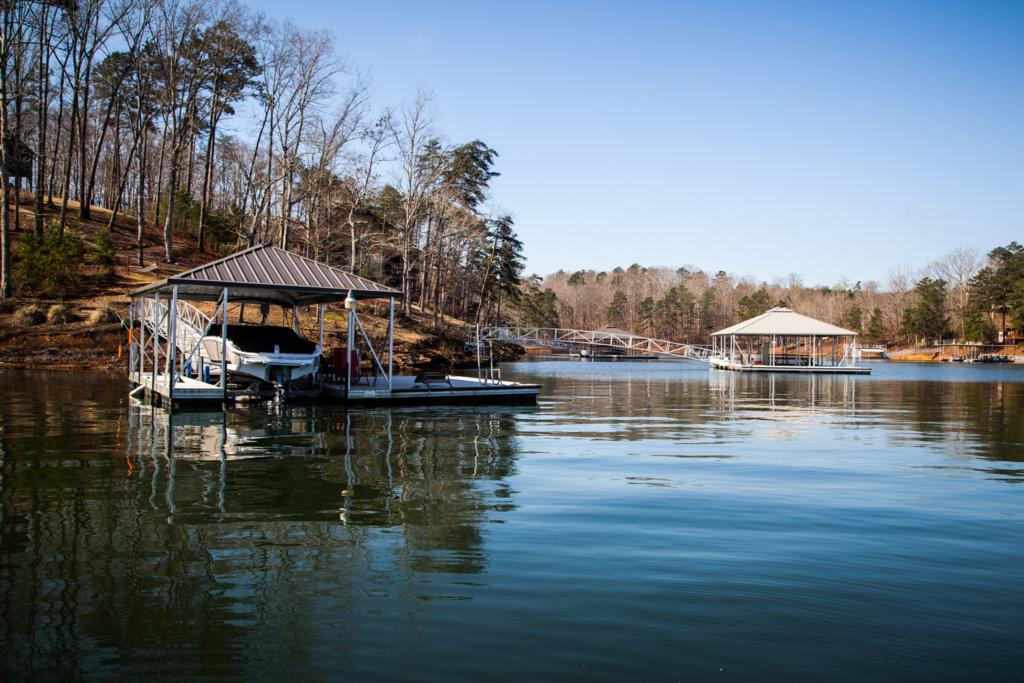Lewis Smith: 4 Factors to Consider

The Walmart FLW Tour event presented by Evinrude on Lewis Smith Lake will give the 154 pros in the field the first multi-species test of the season. Though the pros who made the top 10 at the opener on Lake Toho showcased a wide variety of techniques, everyone was looking for largemouths. This week, two types of bass will come to the scales – spotted and largemouth bass – and there’s nary a stitch of grass to be found in the lake. Having two species in the lake always makes things interesting, especially when the bass are on the brink of the spawn, as they are at Smith Lake.
That in mind, we identified some of the factors that will likely influence the outcome this week.
1. Spotted Bass vs. Largemouth Bass
Smith Lake has a large population of spotted bass and a growing population of largemouths. Though both species can be caught close to each other (in other words, you don’t necessarily need to make a long run to change from targeting one to the other), they tend to inhabit separate niches and are usually caught using divergent techniques.
“I absolutely love fishing for spotted bass,” says Rayovac pro Cody Meyer. “But, the last year or so the largemouths have been really big on Smith Lake. I’m obviously going to spend a lot of my time on spotted bass, but I really think the guy who does well will be catching both.”
“The way to get a check is absolutely to target spots, because there is a large population of spots that weigh 2 to 3 pounds,” adds Alex Davis, who guided on Smith Lake this winter. “I think it is really smart to go catch a limit of spots and then chase largemouths later in the day. Unfortunately, the largemouth deal has always been very inconsistent for me. I’ll catch them good one day and then get like two bites the next.”
Both pros highlighted the difficulty of fully developing two separate patterns. Though Smith Lake has spots, it is not a lake where an angler will typically succeed fishing just one location – running a pattern is essential. Running two patterns on a lake as sprawling as Smith can be time-consuming at best and fruitless at worst.
2. Water Conditions
Currently, Smith Lake is rising slightly and a bit higher than it was in 2013 when the Tour last visited the lake. The water is also warmer (in the upper 50s) and perhaps a tick more stained in the lake’s upper reaches.
“Higher water will put the largemouths in the bushes more, which will make them easier to catch,” says Meyer.
Davis agrees, but notes that the water level would likely not impact the spotted bass one bit. He adds that no matter the volume of incoming water, the water clarity is unlikely to be impacted in a way that is meaningful for the fishing.
3. The Spawn
Going hand in hand with the water conditions is the spawn. At last weekend’s Rayovac FLW Series event on Lake Guntersville, which is about a 90-minute drive northeast of the dam at Smith Lake, spawning bass were caught on the final day of competition. And this FLW reporter may or may not have caught a spotted bass off a bed at the bank by the Smith Lake launch. At this point, it seems certain that at least a few spawning bass will be caught this week, though to what extent the spawn will influence this event is still up for debate.
“I think it will be a full-blown prespawn bite,” Meyer predicts. “Spots will spawn first, but I don’t think it will be a huge factor. Most of the time spotted bass spawn really deep. The big spots at home in California [which actually came from Smith Lake] spawn in February and March, but as many big ones as I’ve caught that were definitely on beds, I’ve never seen [sight-fished] a big spotted bass that was spawning.”
Based on the projected weather conditions, Meyer could be dead on in his assessment. Though the beginning of the week is forecast to be warm and sunny, a mild cold front is forecast to blow in come tournament time, and that might put a damper on the spawn.
4. The Sheer Size
“The thing is absolutely massive,” say Alex Davis about the sprawling Smith Lake. “It isn’t as big in terms of acres as Guntersville, but this place is still huge. Every place you go looks fishy, and every place looks the same.”
Davis is right. Guntersville checks in at 67,900 acres with 890 miles of shoreline, and Smith Lake boasts about 21,000 surface acres and 500 miles of shoreline. According to the pros, Smith arguably has less “dead water” than Guntersville, and thus a lot more to cover. The pros on the FLW Tour are the best in the world when it comes time to breaking down lakes, but this one is still a big challenge.
“This is my second time, so I have very limited experience here,” says Meyer. “I haven’t seen half the lake. The runs aren’t long, but there are so many docks and arms and so much structure that it’s hard to see all of it.
“Most of us could go to Beaver Lake and not even practice, but Smith is a big challenge,” he adds. “You can’t fish everywhere, so you need to find those key areas that work for you.”
